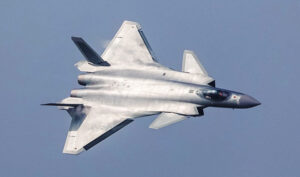Important takeaways from this article in the San Francisco Chronicle about Chinese economic espionage against the US. Also see below for an excerpt from a new DOD/DOS report about China acquiring US high technology.
• U.S. corporations have lost more than $13 billion because of spying, and that’s just for cases now under FBI investigation. — Frank Figliuzzi, in charge of the FBI’s Counterintelligence Division
• “The U.S. intelligence community has characterized China as the most active and persistent perpetrator of economic espionage.” — Assistant Attorney General Lisa Monaco, who heads the Justice Department’s National Security Division
• The economies of the United States and China are inextricably intertwined. The U.S. trade deficit with China was $295.5 billion in 2011, the highest on record. U.S. debt to China exceeds more than $1 trillion. “China is holding the mortgage on our house.” — David Wise, author of “Tiger Trap,” a book on Chinese spying
• From 2010 to now, prosecutors brought at least 30 China-related cases involving economic espionage or violations of the law barring unlicensed export of militarily sensitive technology, according to Justice Department officials. From 2007 to 2009, they brought about 20.
————————————
China’s Space-related Strategic Goals, Capabilities, and Methods for Acquiring Technology
(from the just released DOD and DOS Report to Congress, Section 1248 of the National Defense Authorization Act for Fiscal Year 2010 (Public Law 111 – 84), RISK ASSESSMENT OF UNITED STATES SPACE EXPORT CONTROL POLICY)
. . . . PLA writings emphasize the necessity of “destroying, damaging, and interfering with the enemy’s reconnaissance … and communications satellites,” suggesting that such systems, as well as navigation and early warning satellites, could be among initial targets of attack to “blind and deafen the enemy.”
The same PLA analysis of U.S. and coalition military operations also states that “destroying or capturing satellites and other sensors … will deprive an opponent of initiative on the battlefield and [make it difficult] for them to bring their precision guided weapons into full play.” . . . .
. . . . China’s capability for overall space systems design and integration relies heavily on foreign designs obtained through reverse engineering. It is widely known that China pursues foreign technologies, in part, for the purpose of reverse engineering or to supplement indigenous military modernization efforts.
China’s continuing efforts to acquire U.S. military and dual-use technologies are enabling China’s science and technology base to advance its defense industrial capability and to improve its technological acumen in areas critical to the development of military weapons and communications systems.
China utilizes a large, well-organized network of enterprises, defense factories, affiliated research institutes, and computer network operations to facilitate the collection of sensitive information and export-controlled technology, as well as basic research and science that support U.S. defense system modernization.
Many of the organizations comprising China’s military-industrial complex have both military and civilian research and development functions. This network of government-affiliated companies and research institutes enables the PLA to access sensitive and dual-use technologies under the guise of civilian research and development.
The enterprises accomplish this through technology conferences and symposia, legitimate contracts and joint commercial ventures, partnerships with foreign firms, and joint development of specific technologies.
In the case of key national security technologies, controlled equipment, and other materials not readily obtainable through commercial means or academic exchange, China has utilized its intelligence services and employed other illicit approaches that circumvent or outright violate U.S. laws and export control regulations.
For example, in September 2010, Chi Tong Kuok was convicted for conspiracy to export U.S. military encryption technology illegally to China via Hong Kong. The relevant technology included encryption, communications equipment, and GPS equipment used by U.S. and NATO forces.
Economic espionage, supported by extensive open-source research, computer network exploitation, and targeted intelligence operations also enables China to obtain technologies to supplement indigenous military modernization efforts.
According to Defense Security Service, collection activity associated to countries from the East Asia and Pacific region focused their efforts on “information systems” technology, specifically targeting various components of military command, control, communications, computers, Intelligence, Surveillance and Reconnaissance (C4ISR) applications.
Other technologies targeted included Aeronautics, Armaments and Energetic Materials and Biological. DSS attributes the targeting of Information systems to research and development shortcomings and ongoing efforts to modernize aging military and C4ISR capabilities.
The DoC’s Bureau of Industry Security and the Department of Justice identified at least 26 major cases since 2006 linking China to the acquisition of controlled power amplifiers with military applications, space launch technical data and services, Delta IV rockets, information related to cruise missile design, and military grade accelerometers.
Additional space related items included satellite/missile thermal insulation blankets, controlled electronic components, traveling wave tubes used with satellite and radar systems, microwave amplifiers with radar applications, and carbon fiber material for aircraft, rockets, and spacecraft.
China’s continuing efforts to acquire U.S. military and dual-use technologies are enabling China’s science and technology base to diminish the U.S. technological edge in areas critical to the development of weapons and communications systems. Additionally, the technologies China has acquired could be used to develop more advanced technologies by shortening Chinese R&D cycles. . . . .











